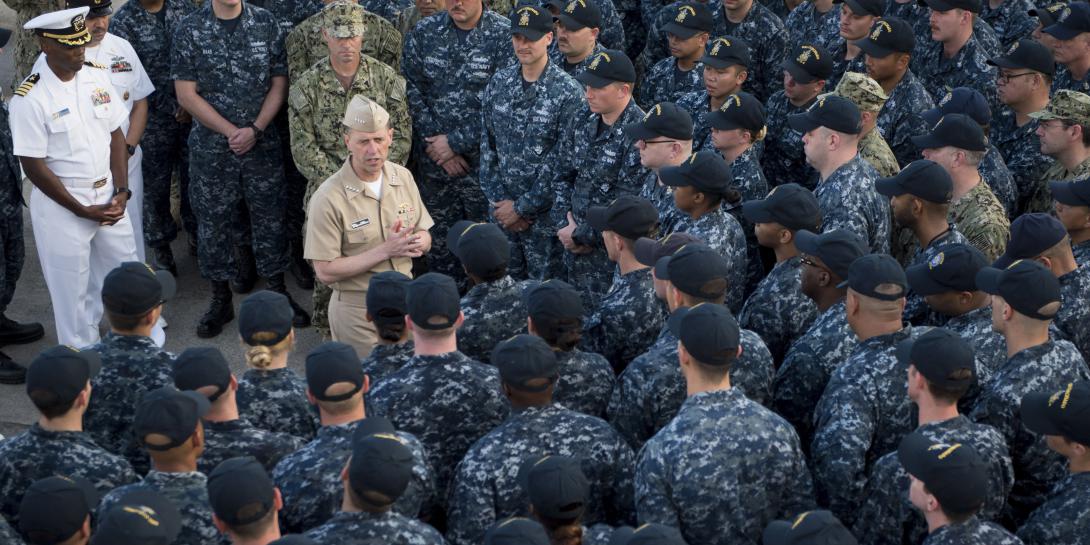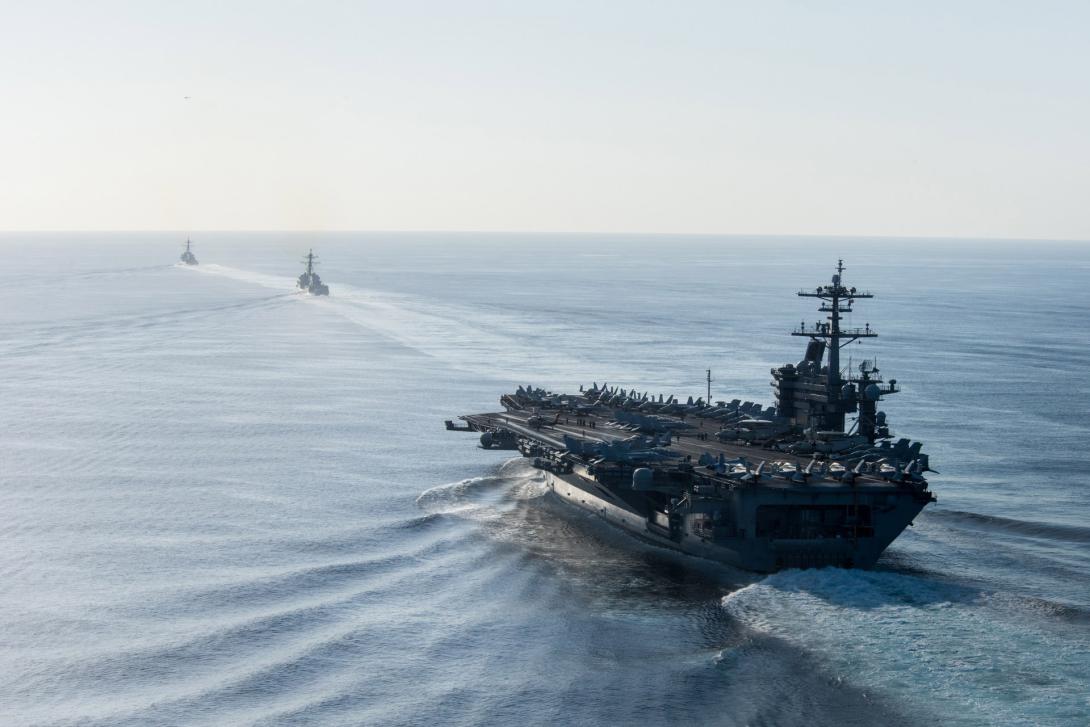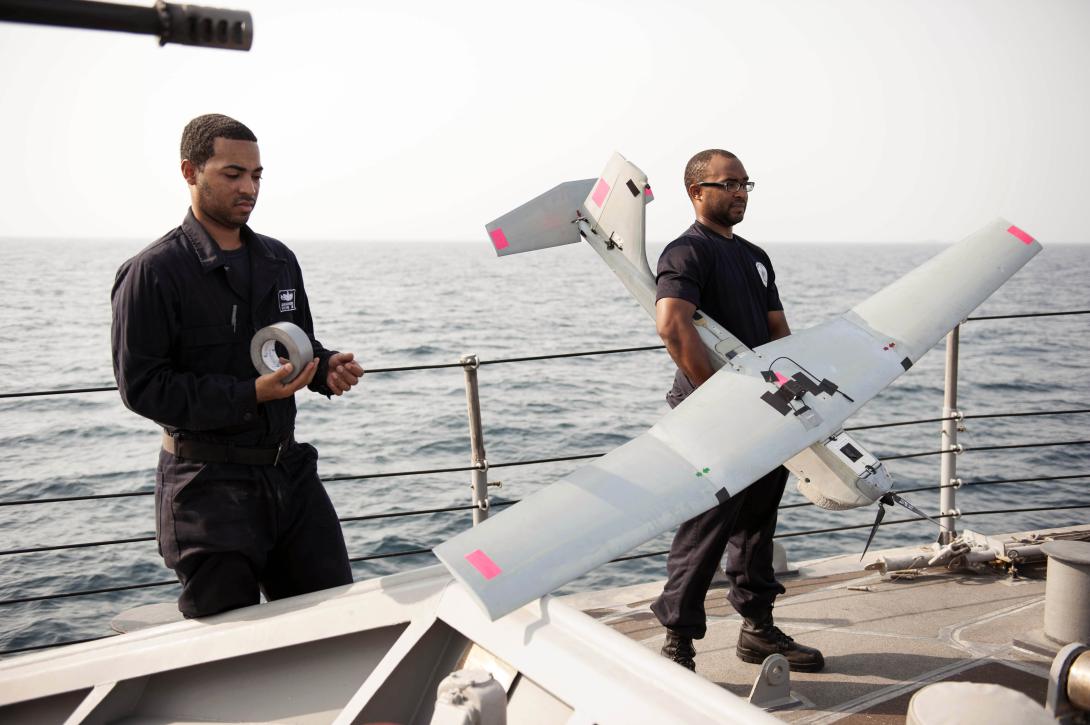CNO Makes His Case for Larger Navy
The U.S. Navy needs more ships and it needs them now, CNO Adm. John Richardson writes in a white paper released today.
The U.S. Navy needs more ships and it needs them now, writes the chief of naval operations, Adm. John Richardson, USN, in a white paper released today. A year’s worth of numerous studies have come to the same conclusions, he says: The need for at least a 350-ship Navy and the need for new technologies and operational concepts.
“The Navy must get to work now to both build more ships, and to think forward—innovate—as we go,” Adm. Richardson writes in the document, plainly titled “The Future Navy.”
Without swift and bold change, the Navy will fail to keep pace with the rapidly changing threats, he writes in the nine-page paper circulated to Navy leaders and posted to his Twitter account. “More and more often you hear one word to describe the pace: exponential,” Adm. Richardson writes. “In many ways, information technology is driving this. But the pace is quickening everywhere.”
Adm. Richardson outlines his case by first making reference to morphing demographics and climate change that will affect the maritime domain. The number of megacities is projected to grow from 31 today to 41 by the end of the next decade, he states, with the vast majority located within 100 miles of a coastline. “People are taking to the seas for trade and sustenance at rising rates: Maritime traffic has risen by 400 percent over the last 25 years, and world aquaculture production increased 13-fold over about the same time frame.”
He then highlights mounting security concerns posed by increased Chinese and Russian competition on a global scale. “They both possess considerable space, cyber and nuclear forces. Both are challenging U.S. influence and interests in expanding areas of the world, often in maritime spaces.” China demarcates its military buildup roadmap with plans for increased shipbuilding endeavors that include ballistic missile submarines and the commissioning of 18 ships. Russia issued new maritime doctrine in 2015 to add modernized vessels to its inventory. “They have been very explicit about their maritime intentions, and have moved out smartly to advance them,” Adm. Richardson says of the two peer competitors to U.S. military superiority.
Any official U.S. military assessment of looming threats would not be complete without a mention of North Korea. Adm. Richardson cites President Kim Jong Un’s “relentless pursuit” of nuclear-capable missiles as a leading concern before bringing up concerns surrounding Iran and the “maritime challenge of a different nature” the Middle Eastern nation poses.
“[Iran’s] growing naval forces routinely exhibit provocative behavior in the Straits of Hormuz, Arabian Gulf and beyond,” the CNO writes. “The Iranians’ support to proxies throughout the Middle East shows no signs of lessening.”
U.S. naval forces could be well positioned to address the changes, provided leaders adhere to the call for more ships, and more ships now. “To address this rapidly changing security environment and achieve its mission, the Navy must provide a balanced fleet that offers U.S. leaders credible options, in places of strategic importance, at a relevant speed,” he writes.
That balance, he declares, is a 355-ship Navy, as called for in the Navy’s Force Structure Assessment (FSA). The 2016 assessment recommends a 355-ship fleet, made up of, in part, 12 aircraft carriers, 104 large surface combatants, 52 small surface combatants, 38 amphibious ships and 66 submarines. The FSA will be one input to the Navy's fiscal year 2018 30-year shipbuilding plan, and replaces the 308-ship force-level goal the Navy released in March 2015. The actual size of the Navy in recent years has generally been between 270 and 290 ships.
Compared to that previous 308-ship goal, the new 355-ship goal includes 47 additional ships, or about 15 percent more ships. However, the sea service will need more than 47 ships added to its 30-year shipbuilding plan to achieve and maintain the Navy’s 355-ship fleet, unless the Navy extends the service lives of existing ships beyond currently planned figures and/or reactivates recently retired ships, reads a Congressional Research Service (CRS) report dated May 5. Reports from the Congressional Budget Office and the CRS both indicate the Navy will need additional ships added to its 30-year shipbuilding plan. For example, the CRS estimates 57 to 67 ships must be built to achieve the 355-ship goal.
Inventory alone, however, is not the sole solution, Adm. Richardson states in the white paper. “We must grow, yes. But we must also implement new ways of operating our battle fleet, which will comprise new types of ships. The clear conclusion is that linear expansion and improvement will not achieve the exponential pace that will enable us to win in the future.” The future fleet must also embrace improvements in other areas, from undersea technologies to manned and unmanned systems and aircraft.
Getting to the numbers requires a tweak in shipbuilding timelines, writes Adm. Richardson, calling for the purchase of aircraft carriers at “the economically optimal rate” of three or four years apart, rather than current five or more years. The industrial base has the capacity to build 29 more ships and 300 more aircraft over the next seven years, analysis shows. “We know we will need the inherent flexibility of a larger amphibious fleet; the industrial base could build five more than we are currently planning over the next six years,” he says.





